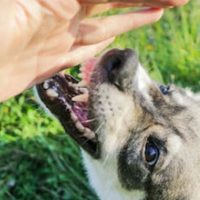The Science of Dog Bite Cases

In a car accident case, where there is disputed liability, often accident reconstructionists are hired to look at data and physical evidence, and recreate how the accident happened. That testimony can be very persuasive to a jury, in resolving whose version of the accident most resembles the truth about what actually happened.
But you may not know that there are experts that can recreate dog bite accidents as well. In fact there is a lot of science behind trying to determine how a dog bite accident happened, and in some instances, why it happened. This is especially true when a dog owner claims that a victim’s injuries were caused by something other than the dog.
Bite Patterns
Often, there is a dispute over how the dog injured the victim. In other words, whether someone was scratched or bitten, and what position the victim was in when he or she was bitten or injured.
This kind of information can be useful to a jury that is trying to figure out issues that arise in dog bite cases, like whether there is provocation whether a dog was leashed or the actions of the dog’s handler or owner.
One thing that experts look at are the wound patterns, and whether there are what is known as contralateral wounds. That means that there are two equal wounds on the victim, spaced out, resembling a bite pattern.
Common sense tells you that if a dog bites, there should be two wounds—one representing the dog’s upper jaw and the other, the dog’s lower jaw.
This isn’t always the case. For example, a dog that lunges at a victim’s face, may only make contact with the dog’s upper or lower jaw. Uneven surfaces, like a face, may only yield one dog bite pattern. But as a general rule, on other parts of the body, there should be contralateral wounds, which would not appear, if the wound was caused by a scratch by the dog.
No Skin Injury Needed
It’s also worth noting, that a bite doesn’t have to break skin, to be considered a bite. So, imagine a situation where a dog bites someone’s pants, but causes the person to fall and injure himself. This would be a dog bite injury, despite the fact the bite itself did not cause any wound.
Provocation of a Dog
Provoking a dog is a valid defense to a dig bite case. But provocation isn’t so easy to define.
There are some cases that suggest that petting a strange dog, or crouching over it, is not provocation, even though most dog experts will tell you never to do this with a dog you don’t know. But other cases that have said that yes, doing things like accidentally stepping on a dog’s tail, is provocation.
Similar actions affect different dogs differently, which can make provocation a big issue in dog bite cases. Everything from breed, to temperament, to the dog’s history, to the location of the accident, need to be considered to see if there was provocation.
Your Dog bite case may require expert testimony. We can help. Call the Boston personal injury lawyers at The Law Office of Joseph Linnehan, Jr. today at 617-275-4200 if you have been bitten or injured by another person’s dog.
Sources:
dogexpert.com/dog-bite-dog-scratch-identification/
dogexpert.com/animal-behavior-expert-witness/provocation-in-dog-bite-cases/
